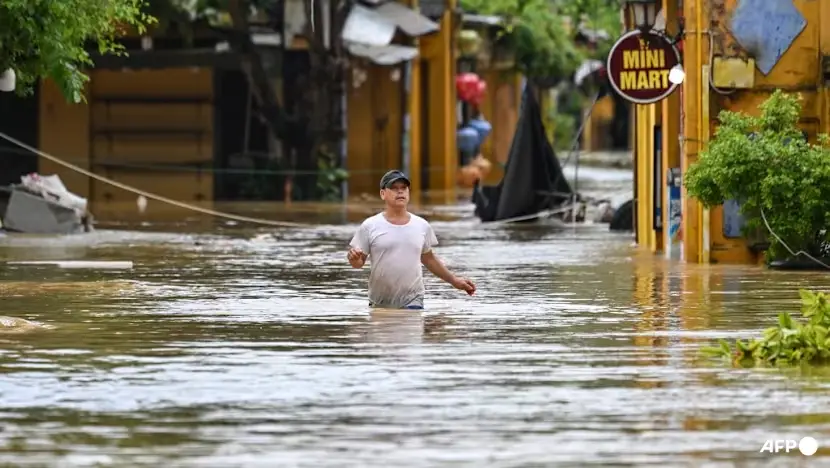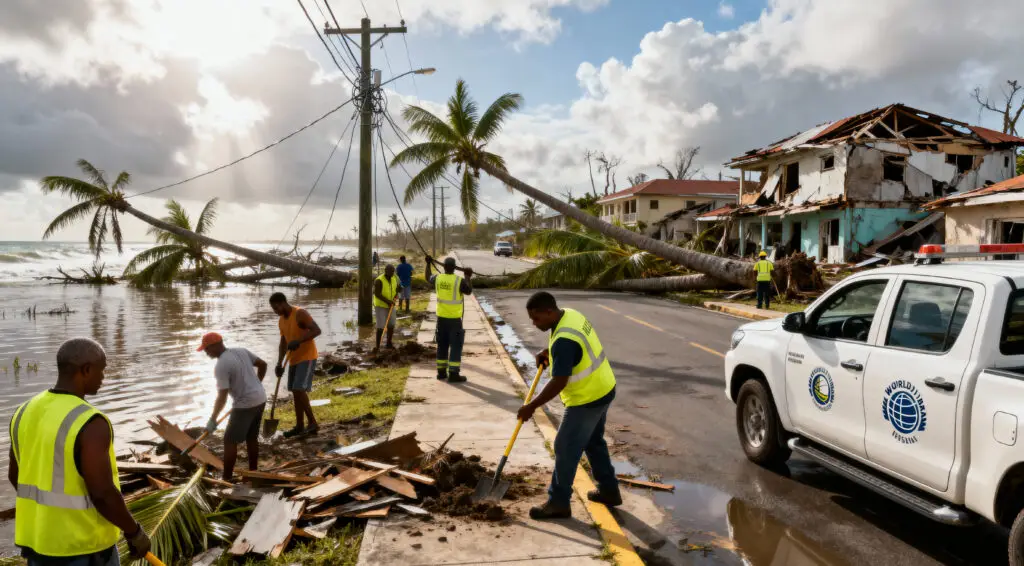Vietnam Battles Widespread Flooding Across Central Regions
Vietnam is going through one of the worst flood seasons in recent years, with scores of people killed and thousands more forced to leave their homes. More than 100,000 houses have been flooded by record rains, which have overwhelmed local disaster response systems.
Experts say that floods happen more often and are stronger than they used to be. This is because of climate change, urban growth, and bad planning. The situation shows how the country is becoming more and more vulnerable to severe weather.

Source: CNA
Heavier Rainfall and Stronger Tropical Storms
Vietnam is in one of the most active tropical cyclone zones in the world. Usually, the country has about 10 storms a year, but twelve have already hit in 2025.
Scientists who study climate say that storms may happen less often, but they are getting stronger. Warmer air holds more moisture, which makes rain fall harder and raises the danger of flash floods in cities.
Sea Levels and Urbanization Intensify Flood Risks
Vietnam is inherently prone to floods since it has a coastline that is more than 3,000 kilometers long and thousands of rivers. Rising sea levels are a bigger hazard to low-lying areas and delta regions that are already having trouble draining water.
Experts claim that these problems have gotten worse because of bad infrastructure and too much growth. The land’s natural capacity to soak up extra precipitation has been damaged by fast building in cities, few green areas, and obstructed streams.
Recommended Article: PAHO Boosts Health Preparedness as Hurricane Melissa Nears
Environmental Degradation Exacerbates Flood Impact
Nguyen Lan Oanh, an expert on the environment, said that cutting down trees and building factories had made Vietnam’s floods worse. Dams for hydropower, mining, and cemented channels have changed how rivers work and made it harder for soil to absorb water.
Oanh remarked, “People need to change how they treat nature,” adding that choices about infrastructure are making natural catastrophes worse. If we don’t fix the damage we’ve done to the ecosystem, storms and landslides will get worse in the future.
Human and Economic Toll Continues to Mount
At least ten people have already died in this week’s record floods, which have also flooded whole towns in central Vietnam. In Hue, it rained around 1.7 meters in 24 hours.
This year alone, natural calamities, including storms and landslides, have killed or left missing about 200 individuals. Typhoon Yagi inflicted more than $1.6 billion in damage to the economy across the country last year.
Government Response and Mitigation Efforts
In areas that are likely to flood, the government has set up early warning systems and told people to leave. In the past few years, the dikes, drainage systems, and seawalls around the Red River and Mekong deltas have all been improved.
Experts, on the other hand, say that upgrades to infrastructure must be made together with long-term risk reduction. Moving at-risk neighborhoods and making sure that cities are planned in a way that will last are both important steps in stopping Vietnam’s cycle of disasters.
Global Climate Funding Remains Insufficient
Vietnam’s problems are similar to those of other emerging countries that are trying to adjust to a changing environment. Even though countries throughout the world promised to quadruple climate adaptation financing by 2025, the amount of money available has actually gone down.
Environmental experts say that nations like Vietnam would stay stuck in an expensive cycle of damage and rebuilding if they don’t get fair international assistance. They claim that building climate resilience needs the support of people all across the world and long-term investment.























